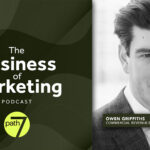By Heather Taylor, Editor-in-Chief, PopIcon
Howie Cohen cites blowing up the Jack in the Box clown as one of his biggest career milestones.
In his 2019 memoir “I Can’t Believe I Lived The Whole Thing,” Cohen recounts his years as a copywriter and later an ad agency founder during advertising’s creative heyday in the 1960s and 1970s. Cohen’s many achievements include creating not one but two Alka-Seltzer commercials that are honored in the Clio Hall of Fame: “Try it, you’ll like it” and “I can’t believe I ate the whole thing.”
And while we at PopIcon are certainly invested in these iconic catchphrases, it’s Cohen’s work related to blowing up Jack Box, AKA the Jack in the Box clown, we felt was a story that deserved to be retold.
Blame the Clown
In 1978, Cohen and Bob Pasqualina were co-creative directors at Wells, Rich and Greene/LA. Pasqualina came up in the advertising world at the same time as Cohen and the two enjoyed a successful partnership that spanned 14 years of creating campaigns, winning awards and even opening an agency together.
At the time, Jack in the Box represented one-fourth of the Wells, Rich and Greene/LA business. The restaurant chain was experiencing rapidly declining sales. They struggled to compete with other fast-food giants like McDonald’s and Burger King, both of which had better food quality and reputations. A big, new idea was needed, fast. At the time, Cohen wrote that Jack in the Box had been nicknamed by consumers as “Gag in the Bag.”
One evening, Cohen experienced a “Eureka!” moment fueled by several glasses of Dewar’s on the rocks.
![]()
He knew about the Jack in the Box brand mascot and how it was meant to be a draw for kids. But Jack in the Box and Wells were also hard at work creating a business strategy that positioned the chain and its food for adults.
Cohen realized not only did they not need the clown anymore, but the mascot could also serve as a scapegoat for the chain’s problems.
The lackluster food? Clearly that was the clown’s fault, not Jack in the Box.
“If we got rid of the clown, it would be proof that we had changed,” Cohen wrote. “So let’s do it in a dramatic fashion. Let’s blow him away!”
“Cute Clowns” Are For the Old Jack In the Box
Cohen and Pasqualina got to work writing up the script for the TV commercial. Their script featured an old woman pulling up to a Jack in the Box drive-thru. A couple of Jack in the Box employees are seen strapping the clown with dynamite.
Despite the old women’s protests that the clown is too cute to be blown up, the employees insist that “cute” was the old Jack in the Box. The new and improved Jack in the Box stands for delicious food.
After giving the old woman a new sandwich to try, she agrees that the new food is much better. Suddenly, the cute clown isn’t worth keeping around anymore.
“Waste him!” the woman declares.
The employees blow the clown up. As millions of pieces of Jack explode all over the place, a jaunty jingle plays in the background.
The food is better at the Box
Jack in the Box
Better at the Box!
Will Jack in the Box Blow Up Its Mascot?
Their bold script ready to go, Cohen and Pasqualina now faced the challenge of selling the idea to the client.
They first ran the idea past Mary Wells Lawrence, the founding president of Wells, Rich and Greene, who loved the idea and the script. She even told Cohen, “Howie, I think you guys might have saved the business.”
What about the new marketing director at Jack in the Box? Referred as “Bubba” in the book, he initially seemed to be on board with the idea. He even called it a breakthrough.
The next day, Cohen wrote that Bubba went to the agency and fired them.
Cohen was shocked.
Lawrence, as he wrote, “went ballistic.”
Lawrence proceeded to write a letter to the chairman of Ralston Purina, the parent company of Jack in the Box whom she was also friends with.
Her letter contained a proposal. If this idea worked, an idea she believed in so strongly that the agency would use its own money to pay for the TV commercial, and if the spot scored well, Jack in the Box should agree to let them keep the account.
The letter won over the Ralston Purina chairman and Bubba was told to un-fire the agency.
The pressure, Cohen wrote, was on for the account, the agency’s money and Lawrence’s reputation. The idea had to work.
Blowing Up the Jack in the Box Clown
According to Cohen, the most popular research methodology at the time was administered by Burke Marketing Research. This measured day-after recall, in which Burke would conduct phone interviews with a sample size audience. They asked if they could remember the spot and asked which selling points the audience could play back. These results were translated into a score.
The average score for a fast food commercial at the time was 27. Scoring seven points above this number was considered above average. The agency was shooting for a decisive score of 30 or higher to keep the account.
Producing the spot meant pulling out all the stops. Commercial director Stan Dragoti “threw himself” into the production and worked to get the best possible casting, cameraman and takes.
The commercial was then edited, polished, and submitted in to Burke. All that was left to do was wait for the score.
The Results Are In
As Cohen recounts it, he was sitting in the agency’s Century City office with Pasqualina. Suddenly, the door flew open and in came an account guy from Jack in the Box. They got the score.
But they didn’t get 30.
They got 72!
“He started talking fast and furious — how it was the highest scoring fast-food commercial of all time,” wrote Cohen. “And not only that, viewers remembered everything about the spot. The explosion, Jack in the Box changing, the food is better. Everything!”
The agency immediately started popping champagne to celebrate. Lawrence, in New York, did a jig when she heard the big news.
![]()
In the days to come, the explosion of Jack in the Box’s clown mascot also lit up the cultural zeitgeist. Clips were featured in local California news channels and on news shows. This gave the ad campaign even more free exposure and added to its overall power.
Through this crazy idea, Cohen wrote the Jack in the Box business immediately turned around. Sales increased by double digits and the brand’s image changed radically overnight.
The overnight success that was blowing up the Jack in the Box clown never went to the heads of Pasqualina or Cohen.
“This was why [we] got into the advertising business in the first place — to do great work, heroic work in this case, and share the victory with the people we cared about.”
Read more about Cohen’s milestones in the advertising industry. “I Can’t Believe I Lived The Whole Thing” is available to buy on Amazon in paperback and on Audible Audiobook.
About the Author
Heather Taylor is the senior writer and editor-in-chief of PopIcon, Advertising Week’s blog about brand mascots. Got a pitch on brand mascots or want to wax nostalgic about characters? Drop her a line at howveryheather@gmail.com.






